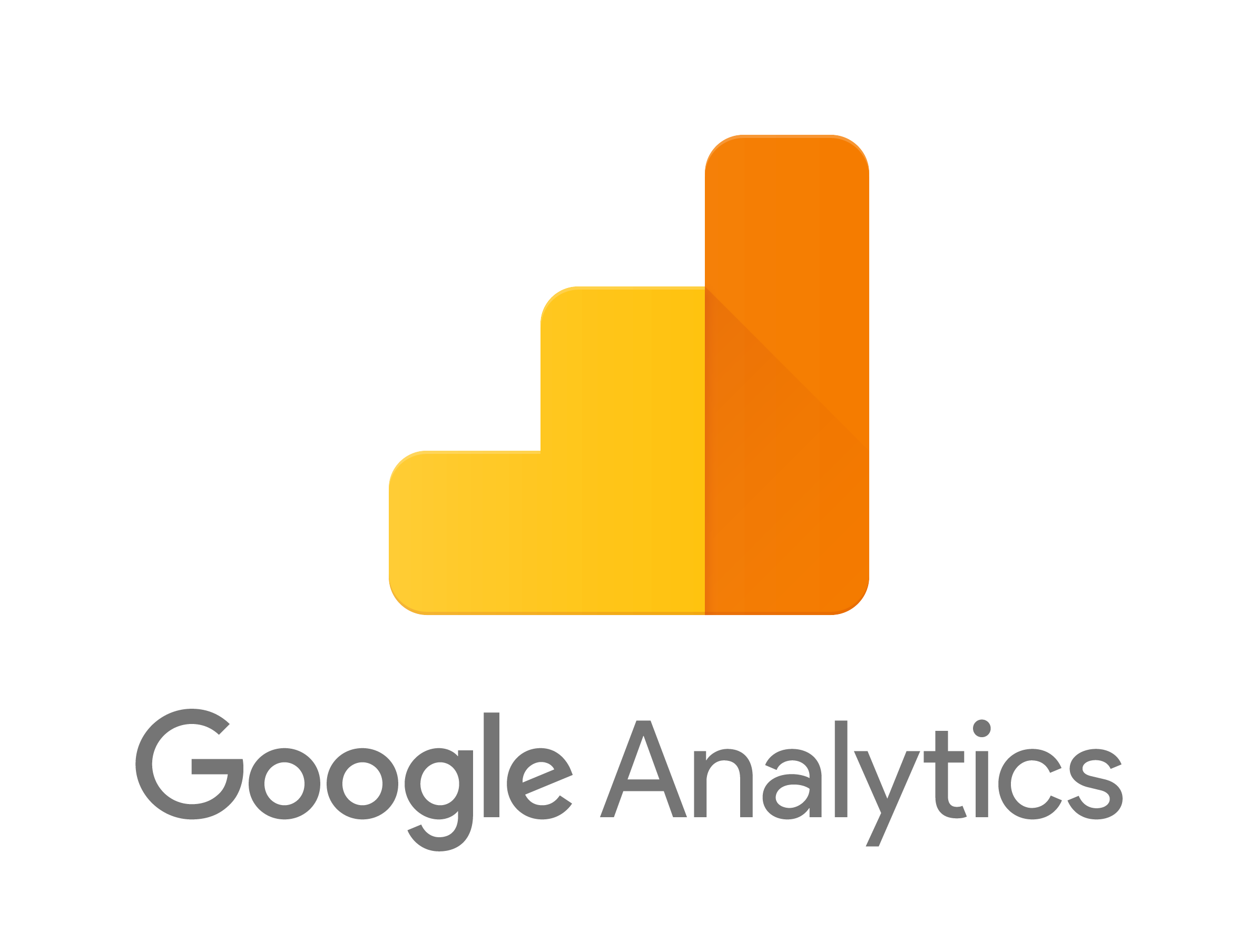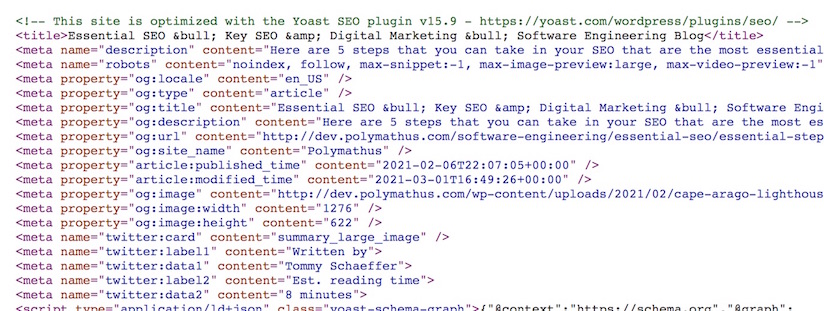There really are a million plus one things you can do to plan, prepare, and maintain your site for efficient performance and optimization for ranking well with search engines. In this article, I aim to go over 5 steps that you can take that are the most essential and frankly the most accessible regardless of your experience. If you are just getting started, this is a great article to jump start your journey or a great checklist to review what you’ve done so far.

A gorgeous, fully functional website is absolutely worthless if no one can find it.
With nearly infinite possibilities, you can invest a lot of money into the design and development of a great website. Then, even after your site is launched, it’s easy to find yourself spending even more time fine-tuning pages, polishing the look and writing pulitzer-prize winning content. No matter how much time or money you invest into a site, even the most gorgeous and fully-functional site is absolutely worthless if no one can find it. So at a certain point, it absolutely pays to stop arranging the place settings and start inviting your dinner guests.
Site-Level SEO Essentials
In the first of these five essential SEO constituents, I am going to introduce the most important files on your website. Well, that is, the most important files for SEO on your site. There are three of them: sitemap.xml (or preferably, sitemap_index.xml), .htaccess, and robots.txt.
The sitemap_index.xml identifies and lays forth the entire outline of your site structure. This clearly defined outline is useful for the robots that are out to index your site. The sitemap becomes even more useful with the addition of the “last updated” date field which helps the crawlers find new and/or updated content requiring attention and re-indexing. It is also useful in helping YOU find outdated content.
The .htaccess file controls the top-level configurations of your server and site. While you will find that your .htaccess file can do many things–including core WordPress functions, the most important function of this file in the context of SEO will be the definition of redirects.
Finally, the robots.txt file grants (or prohibits) access to files, directories and sections of your site to search engine crawlers–The Bots.
Google Search Console
Possibly one of the most important, most powerful, and most FREE tools for taking control of your appearance in search is the Google Search Console. The rules and algorithms governing how you show up (or DON’T) in search results are constantly in flux at Google. It can seem nearly impossible to keep up sometimes. The great news: Google itself provides a free and comprehensive tool to watch for–and fix–errors when they occur. Even better, the tool is implicitly aware of the changes and will inform you any time your site falls out of compliance or best practices. Not all algorithm updates will apply to you and your site, so rather than try to chase ALL of the changes, the Google Search console enables you to react to only those that affect your site.
One of the best things you can start doing yourself to take charge or your search rankings is set up the Google Search Console. Google even provides a detailed set of steps to follow do to so. View those instructions here:
https://developers.google.com/search/docs/beginner/get-started
If you already set it up–or even partially completed some steps, you can jump to your own Search Console here:
Once you have followed the steps above to set up your Google Search Console, it will take a few days for data to start showing. So be patient and have fun! On that note–this stuff is not always for everyone, heh heh. So if your patience has worn thin or if working with this data is not fun for you–I am happy to help. In fact–that’s why I am here! I can jump in and help you anytime–or all of the time, it’s totally up to you. The Google Search Console offers an option to add a user or users to help manage your account. All you will have to do is delegate authority (and choose your desired level of access) to your web developer.
Google My Business
Setting up your business on Google My Business is the first thing you should do in your Local SEO efforts. While nothing is ever a guarantee in Google Search world, adding your enterprise to Google My Business makes your business eligible for the prized “local pack” snippet.
The local pack is a featured snippet that shows an insert of a map of the current local area and lists the businesses that provide the product or service that was the intent of the user’s search. The key with this featured snippet is: 3 local business are featured directly under the map with a link to view “all the rest.” As you might imagine, a significant majority of users click in on one of these three businesses before they view all the rest, and it is extremely advantageous for your business to show up here–exactly at the moment a user is looking for the product or service you provide.
On-Page SEO
Besides having good, useful content for your audience, the next most important element on your web pages is its metadata tags. The <meta> tag defines the metadata contained in an HTML document. Metadata is information about data. Cue the “Inception” original score and theme music now!
If you’re into such things, you can write and implement your <meta> tags from scratch, right in the html or PHP code of your pages. With sites built on a WordPress platform, you can use popular plugins such as Yoast SEO to do the same thing with little overhead.
There are many data that the meta tag can describe, however, the two most important and top priority should be your “title” and “description” tags. Essentially, every single page of your site will have a title and a description. If you have ever done a Google Search, you most likely have noticed that the list of search results have a title and a description. The all-powerful bots of Google decide what these titles and descriptions are based on the content of your page. However, while not guaranteed, it is highly–HIGHLY–likely that Google will use what you have written in your title and description meta tags, if you define them well.
Hey! Want to know a quick way to view how Google “sees” all of your page titles and descriptions? Just type “site:” preceding your domain name in a Google search. In other words and in example for Polymathus website, type: “site:polymathus.com” as you see in the image here. This is a GREAT way to check all your data while you are working on writing strong titles and descriptions for your pages. Do note, however, that it can take anywhere from a few hours to a few days for Google to find your new metadata.
Google Analytics
At last, you have made it all the way down the page to Google Analytics.
Welcome, my friends, for this is where the real fun begins!
Google Analytics is truly the advanced section of the basics section–while also being the beginner section. That is to say, the things you can do with Google Analytics are far ranging and start with the most basic measurements and span the gamut and spectrum reaching to deep data measurement and user interaction analysis on your site.
While digging into much of anything useful in Analytics is out of the scope of this article, in the simplest of first steps, it all begins here at the Google Analytics home site.









